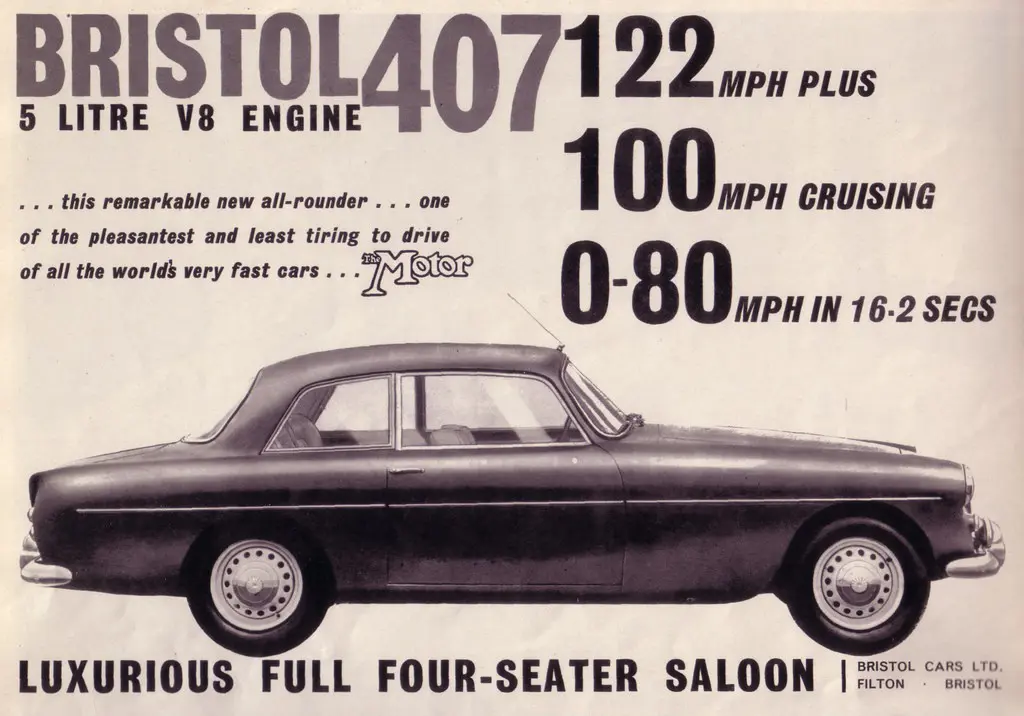For the Discerning Owner; The Bristol 407
02 November 2021
Sixty years ago, ownership of a new 407 denoted a rare combination of exquisite taste and access to a large amount of funds. It was an understated machine that appeared to stand apart from the Aston Martin DB4, Bentley Continental or Jensen 541S. £5,141 7s 3d may have represented the cost of ten Minis, but no true Bristol aficionado was concerned with mere £sd.
Autocar magazine told its readers that the 407 was “comfortable, refined, beautifully made” and a car “for a wealthy man who prefers to drive himself, but does not appreciate bulk and swagger”. The rival publication Motor opined that the 407 was a “remarkable all-rounder” and represented “some of the best motoring that money can buy”.

The 407 made its bow in October 1961, and the central talking point was the Canadian built 5,130 cc OHV V8 engine. This was the first time the firm had used a North Atlantic power plant, and it was made to Bristol’s specification. Naturally, the new model sported disc brakes on all four wheels while the steering was now via cam and roller rather than rack and pinion to cope with the motor’s extra weight.
The result was a true grand tourer with a maximum speed in excess of 125 mph; at 250bhp, the 407 was over 100% more powerful than its 406 predecessor. Torqueflite automatic transmission was standard equipment, and the sole extra was a radio.
Park Ward constructed the standard steel-framed alloy-bodied body for the Bristol was the two-door saloon, and Carrozzeria Esercizio Stabilimenti Viotti converted one 407 into a rather stunning drophead for the 1962 Turin Motor Show. Bristol did not build the open-topped version, but one of their most famous customers urged them to turn the prototype into a fully finished car.
By 1963 Peter Sellers had spent a total of £136,000 (circa around £2,912,414 in 2021 ) on over seventy cars . The actor had already ordered a 407 saloon, but being a motoring fanatic, he could not resist ‘Vita’ Bristol, and so he decided that he must have both versions.
Production of this understatedly remarkable machine ended in 1963 after 88 units with the introduction of the replacement 408. To quote Martin Buckley of Classic & Sports Car, “It is usefully fast but not startlingly so, as if to disturb its occupants with too much acceleration would not have been quite the thing”. And to quote Mr. Sellers, the 407 was “perfect. I didn’t know such a car existed”.
Why choose Lancaster Insurance?
Here at Lancaster, we love classic cars as much as you do and we understand what it takes to protect them for future generations.
We have links with some of the top classic car clubs around the country and some of our policies even offer discounts of up to 25% for club members.
Other benefits of classic car insurance through Lancaster can include:
- Historic rally cover
- Static show cover
- Limited mileage discounts
- Choice of repairer
- 24-hour claims helpline
Give your classic the protection it deserves and get a quote for your classic car today.
